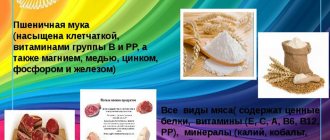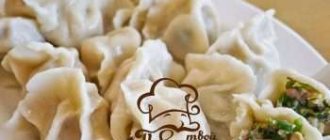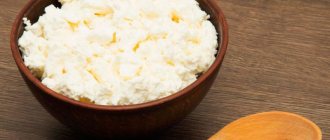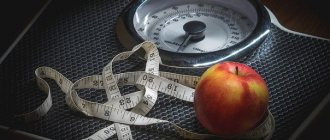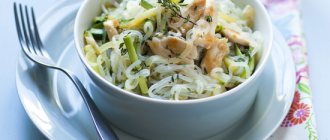Everyone has been familiar with the taste of this national Russian dish since childhood. Both adults and children love dumplings. They have been very popular since ancient times, because it is not for nothing that in Russia there were even special dumpling shops where you could try this tasty and healthy dish. And if everyone knows about its taste, then almost no one knows about its benefits. But many people have heard about the harmfulness of this wonderful product, especially the fair sex.
A little history
No one can say for sure when and how this dish was born. Some believe that the first dumplings were prepared in China, others say that Central Asia is considered their true homeland. But neither one nor the other statement should be spoken with certainty.
The famous historian, one of the greatest experts on Russian cuisine, William Vasilyevich Pokhlebkin, points out in his works that the first mention of this dish in Russia occurs at the end of the 14th - beginning of the 15th century. For a long time, dumplings were considered a regional dish of the peoples of the Urals and Siberia. They were the first to taste them, and they firmly entered into their everyday life. Dumplings were frequent guests on the holiday table and were a mandatory component of the rations of fishermen and hunters, due to the fact that they were perfectly stored in the harsh conditions of those regions.
Content:
- A little history
- Types of dumplings
- Composition and benefits of dumplings
- Calorie content and nutritional value of the product
- Homemade or store-bought
- Use in cooking
- Dumplings on a diet
- Harm and dangerous properties
- How to choose and store dumplings correctly
- conclusions
And only by the middle of the 19th century they appeared in the central and southern parts of Russia and became one of the everyday and popular dishes of the Russian people. However, it is worth noting here that in Russian cookbooks, long before this time, there are references to some dishes, which in their composition are very similar to modern dumplings: shurubarki, ushki. They were prepared from unleavened dough and finely chopped meat. It turns out that in the 19th century it became common to call such dishes dumplings.
It is believed that the word “pelmeni” came into the Russian language from the Finno-Ugric dialect, where it can be translated as “bread ear” (pelnyan: pel - ear, nyan - bread). The peoples of Udmurtia consider dumplings their ancestral dish. The republic even celebrates the national holiday “World Dumpling Day.” They say that in the old days the famous Siberian Highway passed through that territory. And it was with his help that the dumplings found their way to Siberia, where they were reborn again, receiving the name “Siberian dumplings.”
Is it possible to eat dumplings on a diet or absolutely not?
You can often hear the question: is it possible to eat dumplings on a diet? This question is quite understandable: many of us really love dumplings, our national dish. They are tasty, satisfying, aromatic, and easy to prepare (if we are talking about a purchased semi-finished product). Maybe, as many who dream of losing weight hope, dumplings can, at least with a stretch, be considered a dietary dish?
We should immediately dispel the myth that classic dumplings are sometimes acceptable on a diet. This is a high-calorie dish that contains an unhealthy combination of white flour and fatty meats. Such a product can never be included in the diet.
Another thing is that you can make your own dumplings at home from other flour, with dietary filling. But even in this case, you need to try very hard to make the product truly useful.
What is the secret here and why experts give a negative answer to the question “can you eat dumplings while on a diet?” read our article.
Why dumplings according to the classic recipe are prohibited on a diet
Dumplings are dough with meat. As a rule, the most common recipe contains pork, which nutritionists ask us to forget about.
The combination of dough made from white wheat flour, rich in gluten, and fatty meat is a difficult test for the stomach and pancreas.
Both of these foods typically top lists of ingredients banned on any diet. Together they make a completely diet-inappropriate dish.
Let us also remember the calorie content of ordinary dumplings: a semi-finished product prepared in the usual way (boiled dumplings) has a significant energy value: 275 kcal per 100 g (taking into account the energy value of the sauce).
See the same topic: The fourth stage of the Dukan diet - Stabilization
If you also fry them, as we like to do, then more calories will be added. In this case, we will have a value of about 500 kcal per 100 g. And this is only if we fry the dumplings in vegetable oil. Using butter increases calorie content by 200 kcal. The conclusions are quite logical: dumplings, especially fried ones, are not worth eating on a diet.
If you take into account the serving size (they can be very large), then even without taking into account the opinion of a qualified specialist, you will understand the answer to the question: can you eat dumplings on a diet?
Pleasant exception
Some nutritionists believe that the psychological effects of severe food restrictions during a diet can have a big impact on increasing appetite after the period of restriction ends.
Thus, the entire value of the diet is reduced to zero.
To prevent this from happening, healthy patients are allowed to break the diet from time to time (very rarely, once or twice a week), including their favorite foods.
If your nutritionist is okay with such exceptions, and if you really like dumplings, then you can eat a small portion once a week. It is advisable that you choose dumplings with dietary filling. You should not fry dumplings, at least during the period when you are following a weight loss program.
Good news for those who love and know how to cook
It is quite difficult to reduce the calorie content of dumplings, but it is possible. By replacing the type of flour and filling composition, we will get a healthier dish with less calories. In this case, we can firmly say that you can eat dumplings while on a diet!
But you need to understand that the taste of dietary dumplings will be completely different: the ingredients of the dish will be dark flour, bran, and the filling will be vegetables, mushrooms and lean chicken.
Vegetables contain fiber, which will greatly improve the absorption of food and make the dish more healthy. The approximate energy value of dumplings with mushrooms is 100 kcal per 100 grams.
This is not bad for a diet product!
Look at the same topic: Fractional meals with the “one glass” diet
If you are too lazy to cook yourself and look towards ready-made dumplings with cabbage or potatoes, then you may be disappointed. These dishes are not so high in calories, but their benefits are small. They are not suitable for diet.
In order for the dish to be truly healthy, it is better to even cook the minced meat yourself, rather than buy it ready-made in the store.
Freshly prepared minced meat from lean, fresh meat will be beneficial for your digestive system and will not have a harmful effect on your prospects for losing weight.
Only handmade, fresh, home-cooked dumplings are suitable for us. In this case, you will know exactly what fat you put in, how high quality the meat and other ingredients were.
Cooking dietary dumplings
If you are wondering whether dumplings are possible on a diet, while you have free time for culinary experiments, then you can try preparing a light, low-calorie dish - veal dumplings.
As the name suggests, the dumplings are filled with meat. In this case, we will not even prepare vegetarian dumplings, but a full-fledged dish for meat eaters.
But it does not contain flour, so its taste will still be unique.
For the dough we need: one egg, corn starch (2 tablespoons), the same amount of wheat bran, 5 tablespoons of oat bran. For the filling you will need 200 g of steamed veal and an onion.
First, prepare the minced meat using a meat grinder or blender. Then grind the bran in a coffee grinder, mix it with water and starch, add the egg.
It turned out to be dough! It must be kneaded, formed into flat cakes and dumplings made in the usual way. On a diet, it is best to cook the dumplings a little longer (10-12 minutes) so that the meat is well cooked.
These dumplings will definitely not harm your diet! Bon appetit.
Look at the same topic: Super vitamin diet with cottage cheese and apples
Important Limitations
Even dietary dumplings remain a fairly high-calorie dish; they should not be overused: you should not eat more than 10 dumplings (if they are large). As a rule, nutritionists warn against servings larger than 150 g.
You should not eat this dish immediately before bed. It will be better for the body if all the fats are processed, so the best time for dumplings is lunch.
Be sure to use herbs and seasonings. Avoid mayonnaise and other high-calorie sauces. You cannot eat bread with dumplings.
By the way, all these recommendations are also valid for those who are not on a diet, but would like to eat properly and intelligently. We wish you good health and a thin waist!
Source: https://dieta4y.ru/mozhno-li-est-pel-meni-na-diete.html
Types of dumplings
Almost all cuisines have their own types of this popular dish. For example, in China they are known as wontons, baozi, shui yao or jiaozi. In Central Asia and the Caucasus they are called manti, momo, khinkali, poses, chuvaru, mandu and choshura. Jews also have their own analogue of this dish - kreplach. In Crimea it is known as Tatarash, and in Italy it is known as ravioli or tortellini. In German cuisine, dumplings are called maultaschen, and in Belarusian cuisine they are called sorcerers.
China
Wontons, baozi, jiaozi or shui yao are Chinese versions of dumplings. They differ from Russian ones in their choux pastry and variety of fillings. Sugar and sunflower oil are added to the dough, which significantly increases its calorie content.
Meat, fish, poultry, seafood, mushrooms, vegetables and fruits are used for filling. Classic pork wontons are filled with white cabbage, carrots, onions, grated ginger, soy sauce and sesame oil. In general, due to the large number of vegetables, wontons can be considered a conditionally dietary dish. But the Chinese can mix the same pork with shrimp and green onions. This is, of course, unusual for Russian taste.
In any case, adding fish or seafood to dumplings significantly increases their nutritional value. True, calorie content does not always reduce.
For baozi, they always use yeast dough with premium wheat flour, which is detrimental to the figure.
middle Asia
Here dumplings are called “manti”, “pozy” or “chuchvara”. Poses are huge steamed dumplings. They are distinguished by a large amount of broth inside. At the same time, the filling, as in manti, is made from minced meat, as well as from lard with onions and spices.
Chuchvara - Uzbek dumplings with lamb, fat tail fat and a lot of onions. On the one hand, onions reduce calorie content, on the other hand, fatty lamb greatly increases it.
These dishes can hardly be called dietary; even a large amount of spices that speed up metabolism cannot help.
Composition and benefits of dumplings
Traditionally, this product consists of unleavened dough made from flour and water with the addition of salt, eggs and sometimes milk, and a filling. It is customary to use chopped beef, pork or lamb as filling. You can also use mushrooms, fish, seafood or poultry. True connoisseurs of hunting love to eat dumplings stuffed with game: venison, elk or bear meat. Often, raw ground onions and hot spices are added to the filling to give it a special taste.
The beneficial properties of dumplings depend solely on the valuable properties of the products included in its composition. For example, wheat flour, which is traditionally used to prepare this dish, is a rich source of fiber and also contains B vitamins and vitamin PP. The mineral component in it can be distinguished:
- magnesium;
- copper;
- zinc;
- phosphorus;
- iron.
The meat used to make dumplings is undoubtedly a rich source of protein. For example, pork is rich in lysine, which helps prevent osteoporosis and strengthens bone tissue. Beef or veal is very well absorbed by the human body and retains its useful and valuable composition even during heat treatment. They contain substances necessary for the functioning of the body, such as:
- vitamin E;
- ascorbic acid;
- vitamin A;
- choline;
- B vitamins;
- vitamin D;
- vitamin PP.
They saturate the dish with useful minerals such as potassium, magnesium, zinc and cobalt.
If the filling of dumplings includes fish or seafood, it will be a storehouse of iodine and phosphorus, as well as a wonderful vitamin complex containing the vitamin of youth and beauty - vitamin E, and anti-stress vitamins - B vitamins, and many other useful substances.
Options for unleavened dough dishes with filling
Dumplings
Pelmeni is a dish of Russian cuisine that originated in the Urals. It is based on minced meat or fish with spices and unleavened dough with an egg. It is not necessary to use beef or pork: gourmets prefer duck, tuna, salmon, venison and even bear meat. The preparation method is very simple: semicircular or round products are boiled in hot water until they float. By the way, initially they used not sour cream or even mayonnaise as a dressing (it didn’t exist then), but three percent vinegar, horseradish or mustard.
Vareniki
Vareniki are the Ukrainian cousins of dumplings. There is a difference between them. Firstly, you can add whatever you want to dumplings: from lard and cabbage to fresh berries and cottage cheese. Secondly, the dough can be made with yeast or yogurt. Thirdly, the dumplings are larger in size and are always in the shape of a semicircle.
Khinkali
This delicacy originated in Georgia. Hearty meat was used as filling: pork, beef or lamb. A distinctive feature is the broth, which is important to keep inside the khinkali. The dough is prepared without eggs; minced meat is usually used to make the broth richer. The dough bundle should have from 18 to 36 folds. The dish should be eaten with your hands, holding the top part.
Manti
Manty is considered a national dish simultaneously in Turkey, Korea, Mongolia, Tatarstan, Kyrgyzstan, Bashkortostan, Kazakhstan and other Asian countries. They look like kegs with a lid made of dough into which you add yeast. Minced meat with spices is used as filling. If you want to make a more authentic dish, add fat tail fat and steam the whole thing.
Kurze
Kurze is a Dagestan national dish. Essentially these are the same dumplings: the dough recipe is the same, and the filling is also meat (lamb is best). Sometimes tomato paste and suzma, a dairy product similar to cottage cheese, are added to the spices. The shape of the kurze is oval with pigtails along the edges.
Dim sum
One of the most popular delicacies in China. True, this word refers to several snacks. Specifically, dim sum is a Hong Kong dish. In some ways it resembles dumplings: you can also use whatever you have on hand as a filling. True, the dough is based on rice flour. They are similar in shape to khinkali. Steam, lightly frying on the bottom.
Gedzy
Japanese version of dumplings. The filling contains minced meat (fish or meat), cabbage, garlic and onion. The dough is usually taken unleavened. Unlike previous dishes, gyoza is usually fried in oil on one side or deep-fried.
Ravioli
Italian type of dumplings. They put whatever their heart desires inside: from fruits to fish and meat. The dough is also unleavened with the addition of olive meat. Unlike dumplings, ravioli are not molded, but the filling is placed on a layer of dough, and then divided into pieces. They are usually square in shape.
Calorie content and nutritional value of the product
Calorie content, as well as nutritional value, also directly depend on the ingredients included in the dish. For example, dumplings stuffed with meat will be much higher in calories than fish or vegetable dumplings. Accordingly, among the meat types, dumplings stuffed with pork or lamb will be the most high-calorie. By the way, a significant difference between dumplings and vareniki is that dumplings always use raw filling, while dumplings use a filling that has already been pre-processed, for example, boiled.
On average, the energy value of this dish will be approximately 225 kcal per 100 grams of product. The protein content ranges from 6 to 14 grams, fats - from 4 to 15 grams, carbohydrates - from 20 to 35 grams per 100 grams of the finished product.
Which of the following has the least amount of calories?
Obviously, fatty meat (pork or beef) will be more harmful to the figure, so we immediately discard kurze, khinkali and manti. Dumplings are also quite high in calories, but they can be cooked with chicken and thus reduce the calorie intake. Gyoza and dim sum are not suitable for us, as they are usually fried, which makes them very greasy. What remains are dumplings and ravioli. If you compare the energy value, it is better to choose dumplings made with yeast-free dough. For example, one hundred grams of dumplings with mushrooms contains 183 kcal, and the same portion of ravioli with a similar filling contains about 220 kcal.
Homemade or store-bought
It's no secret that today you can find countless ready-made semi-finished products in supermarkets. And how convenient: you don’t need to waste time preparing dough and minced meat, buy it, boil it and you’re done! But will they be as healthy as homemade, freshly prepared dumplings? To answer this question, it is worth turning to the composition of store-bought semi-finished products. Manufacturers often use soy to make them as an alternative substitute for meat, and also use synthetic flavors, emulsifiers, preservatives, dyes and stabilizers in their production. Of course, you won’t find all this in natural homemade products. Therefore, when choosing between store-bought semi-finished products and homemade delicious dumplings, the choice should definitely be in favor of the latter.
Use in cooking
Traditionally, it is customary to boil dumplings in a sufficiently large amount of water with the addition of salt, herbs and spices. They are often consumed as soup, along with the broth in which they were cooked. They are served with vinegar, sour cream, mustard or butter. Some people like to add various sauces to this dish, such as mayonnaise or ketchup. You can also find dumplings fried after boiling, or simply fried in a large amount of oil.
Recipe for making dumplings at home
For this dish you will need:
- wheat flour – 3 cups;
- water – 1 glass;
- beef – 500 grams;
- onion - 1 piece;
- salt;
- Bay leaf;
- black pepper.
Mix salt, flour and water and knead the dough. Leave in a cool, dark place for half an hour. To make the filling, grind the meat and onion in a meat grinder, add salt and pepper, and mix thoroughly. To make dumplings, you can use a special dumpling maker, which makes their preparation much easier. You can also sculpt them in the traditional way. To do this, roll out the dough into a thin sheet and cut out small circles from it. A regular glass works well for this. The filling is placed in the middle of each circle and the edges of the dough are tightly pinched.
The dumplings are cooked either steamed or in water with the addition of salt, bay leaf and black peppercorns. Cooking time is usually five minutes after boiling. When preparing steamed dumplings, the cooking time increases significantly and is approximately 15-25 minutes.
Traditionally, dumplings are served with a 3% vinegar solution, black pepper and mustard.
How to reduce the calorie content of dumplings?
If you can’t live without this folk delicacy, try cooking them at home, taking into account a few tips:
- Avoid vinegar, seasonings, mayonnaise and sour cream
- Use a light filling: chicken, cabbage, spinach or light cheese (for example, suluguni).
- Eat them in the first half of the day, while it is easier for the body to cope with heavy food.
- Prepare the dough using whole grain or oat flour.
- A serving should not exceed 100-150 grams.
Dumplings on a diet
It seems unrealistic to consume such an absolutely non-dietary product during a period of intensive weight loss. Many, on the contrary, are confident of a sharp weight gain when eating this dish and often refuse to eat it even on ordinary days. But it turns out that dumplings on a diet are far from a curiosity. This is a really high-calorie dish, and if possible, it is still better to abandon it in favor of healthy vegetables and nutritious proteins. But if the love for dumplings overpowers the arguments of reason, then you can leave it in the daily diet. But it is important to follow some rules so as not to nullify all your efforts. So, when losing weight, you need to eat dumplings only under the following conditions:
- do not exceed the daily allowance of 1200 calories;
- distribute food in small portions and eat it at least 4 times a day;
- do not eat after six o'clock in the evening;
- the number of dumplings per serving should not exceed 10 pieces;
- It is strictly forbidden to serve dumplings with high-calorie additives - butter, ketchup or mayonnaise;
- use healthy yogurt or low-fat sour cream as a sauce for the dish;
- prepare dumplings from whole grain flour and dietary beef or turkey mince using vegetables.
If we take these few simple rules as a basis, then eating delicious homemade dumplings will not lead to excess weight gain, but will even contribute to the loss of several kilograms.
Who shouldn't have dumplings
It is recommended to completely exclude dumplings from the diet for the following indications:
- gastrointestinal ulcer;
- diabetes mellitus (protein dumplings are allowed);
- acute and chronic pancreatitis, dysfunction of the gallbladder and biliary tract;
- chronic renal failure.
If you are overweight, have atherosclerosis and pathologies of the cardiovascular system, it is recommended to prepare only dietary dumplings and eat them no more than 1-2 times a week.
The dumpling diet should be followed only in the absence of chronic diseases of the gastrointestinal tract, heart, kidneys and endocrine system.
Harm and dangerous properties
The whole harm of this dish lies in the high calorie content of the product. Naturally, it is not recommended to consume this dish if you are prone to obesity. You should also give preference to natural homemade dumplings, which are made from quality products. Store-bought analogues may contain chemical preservatives and dyes that are harmful to the body. Of course, homemade high-quality products should not be consumed in excessively large quantities, otherwise it may have a bad effect on the body.
How to choose and store dumplings correctly
Best materials of the month
- Coronaviruses: SARS-CoV-2 (COVID-19)
- Antibiotics for the prevention and treatment of COVID-19: how effective are they?
- The most common "office" diseases
- Does vodka kill coronavirus?
- How to stay alive on our roads?
If, nevertheless, the choice is made in favor of store-bought semi-finished products, then you need to know how to choose the right product of more or less quality. Firstly, you should pay attention to the composition. The ideal dough-to-meat ratio would be approximately 40/60, 50/50 or 60/40, that is, they should be contained in the dish in almost equal proportions.
Look carefully at the packaging: it is better to take one where the composition of these products is written separately in percentage terms. If, however, the ingredients are listed in a row, then you should be aware that they are listed in descending order. That is, if beef is listed first, then pork, and so on, that means there is the most pork there.
You should pay attention to the fact that the product does not contain vegetable protein, and the color of the dough does not take on a grayish or yellowish tint. This would mean that the dumplings contain various additives in the form of emulsifiers, dyes, thickeners or other synthetic preservatives. This may also be an indicator of improper storage of the product.
The product keeps very well frozen. The shelf life of such semi-finished products can be several months.
What makes you get fat quickly? Why am I gaining weight? 10 reasons why you gain weight quickly
Listed below are common reasons for rapid weight gain. They will help you answer the question of why I gained weight sharply. Some of them may be unexpected.
Reasons for rapid weight gain: Top 10
1) You stopped being on a strict diet
If you stop being on a strict diet, having achieved your goal of losing weight, then when you return to a normal diet, you will inevitably gain weight.
The body will begin to accumulate reserves in case “hunger times” come again. This is how the protective mechanism works, which for many centuries allowed a person to survive in conditions when there was a lot of food during the season, but in winter they had to starve.
For this reason, weight loss requires a balanced diet that ensures your body receives all the important nutrients.
2) You stopped playing sports
You may not have eaten more, but you used to exercise. And having stopped doing this, they did not change their eating habits. It is clear that with active physical activity, the body burns more calories. Therefore, it is not surprising that you have gained weight.
It will be helpful to get back into exercise if you enjoy the process. If you are not a fan of heavy loads, walk for at least half an hour a day. And don’t forget to change the nutritional value of your diet in accordance with your new physical activity regimen!
3) You are pregnant
Gaining one or two kilograms can be caused by pregnancy. If unexpected irritability and morning sickness are added to a couple of kilograms, then you should go to the pharmacy for a pregnancy test.
4) You don't sleep well at night, or you don't get enough sleep
Scientific research shows that poor sleep quality can cause excess weight.
Those who go to bed late often eat at night or chew something until they go to bed. The desire to eat in this case is explained by the fact that lack of sleep leads to biochemical changes in the body that stimulate the feeling of hunger, while you should already be sleeping.
Try to go to bed early, and if you want to eat something after dinner, it should be a light, low-fat product - kefir, fruit.
5) There are hidden fats in your food
If you go to restaurants very often because your social status or work obliges you to do so, this is the most likely reason for the appearance of extra pounds. Side dishes, meat, salads, all kinds of desserts... For good taste, you cannot do without oil, even if at first glance it is not there. Hidden fats from store-bought products are found, for example, in sausage, cookies, cheese, and chocolate.
If you eat something light between meals, but in large quantities, without changing your diet during the main meal, then during the day you end up eating more calories than you think, and this can lead to weight gain.
Based on the above, try to go to restaurants less often. And when you buy food in the store, don’t forget to look at the packaging to see how much fat it contains. And remember, if you've eaten well and are still hungry, you may simply be lacking some vitamins or minerals.
6) You eat too late
Do you have breakfast after 10 o'clock in the morning with hot chocolate and a sandwich with butter and jam? What mistake! The remaining day is not enough to use it all up!
Do you have lunch after 15:00 and dinner after 20:30? Taking part in an aperitif (with alcohol and saltine crackers) until 11 pm every Friday and Saturday? At night, your metabolism slows down and what your body does not have time to process during the day is stored in the form of extra pounds. Therefore, if you want to have a slim figure, you should have breakfast at 7-8 o'clock in the morning, and have dinner no later than three hours before bedtime.
conclusions
Pelmeni are a very tasty, nutritious and at the same time quite healthy national Russian dish. Its history goes back quite a few centuries, and during this time it has gained even more fans. Despite the fact that dumplings are a rather high-calorie dish, they have captivated the hearts of followers of a healthy lifestyle. The thing is that this dish is quite varied. It can be made from dough and a variety of fillings, including healthy, low-calorie ones. If, for example, you use fish, seafood or vegetables, as well as dietary meats, then the dumplings will introduce the beneficial minerals and vitamins contained in their composition into the body and will not add problems with excess weight. Now in stores there are a lot of different ready-made semi-finished products that will reduce labor costs and time when preparing the product. But such dumplings may contain unnecessary preservatives or soy in their composition. Therefore, if you choose between delicious homemade and store-bought dumplings, then the choice should be made in favor of homemade ones. This dish will be prepared from high-quality natural products, and then we can confidently talk about its beneficial properties. Dumplings keep well in the freezer for several months, and the only harm they can cause is overeating. Which will most likely lead to weight gain and extra pounds. Just when using it, you need to observe moderation, and then there will be no negative consequences.
More fresh and relevant information about health on our Telegram channel. Subscribe: https://t.me/foodandhealthru
We will be grateful if you use the buttons:
Do dumplings make you fat? Foods that make you fat.
10 foods that make you fat
Foods that make you fat should be excluded from your diet. We all understand perfectly well that there are foods that make us fat. Our body begins to gain excess weight, and if you exclude foods that make you fat from your diet, then you will begin to lose weight, and rapidly. The most important thing for losing weight this way is willpower and habit. It is enough to hold out for just 21 days and not eat foods that make you fat, and you will notice that you are losing extra pounds. Moreover, 21 days is enough to get used to giving up your favorite unhealthy foods. In the article I will describe not only the foods that make you fat, but also little tricks on how to give up these foods.
1. Sugar. The first and most harmful product that makes you fat is sugar. If you want to lose weight, then first of all give up coffee and tea with sugar. You should also limit your consumption of packaged juices, as they are overly saturated with sugar. Try drinking tea without sugar for a week, and after a week you will perceive tea or coffee without sugar as a very tasty drink. 2. Potatoes. Potatoes are also a fattening food because they contain a large amount of starch. If you love this vegetable very much, then limit the amount of potatoes you consume. Eat only boiled or baked potatoes. And exclude everything. 3. Bakery products. These are the most harmful foods for weight loss. If you want to lose weight, then give up white bread, pies, muffins, cakes, etc., eat only black rye bread from baked goods, it is the least harmful for weight loss. 4. Fig. White polished rice is also one of the foods that make you fat. Do not look at the fact that there are a huge number of rice diets. Remember - white polished rice contains a lot of starch, which makes us fat. Many people think that in China and Japan they eat rice in huge quantities and their nation remains slender and graceful. The Chinese and Japanese do not eat our white polished rice, but brown rice, in which all the nutrients and fiber remain. You shouldn’t completely give up eating this cereal; it’s enough to limit your rice consumption to once a week. 5. Instant porridge, muesli. Everyone thinks that eating porridge for breakfast is healthy, and using instant porridge is also convenient. However, if you do not want to gain weight and want to lose weight, give up fast food breakfasts. They contain “empty” carbohydrates, which create the illusion of fullness and cause our body to gain weight. Buy better oatmeal and cook it in the usual way. Add fruit or honey. The porridge will be tasty and healthy. 6. Broths. Chicken and meat broths are also among the foods that make you fat. After all, almost all the fat comes out of the meat into the broth. And we think, this is water, we can eat more. No you can not. If you like broths, then it is better to eat vegetable broths and cook first courses in vegetable broths, and not in rich meat or chicken. 7. Semi-finished products. All semi-finished products are foods that make you fat. Fatty meat, lard, sausages, frankfurters, carbonates, etc. not only make our body fat, but also undermine our health. Avoid store-bought dumplings, sausages, etc. 8. Butter. It is not recommended by doctors to completely exclude butter from the diet, because it contains a huge amount of vitamins and microelements. However, this product contains a huge amount of fat and carbohydrates, so you should not consume more than 10 grams per week. 9. Mayonnaise. In order to avoid gaining weight, it is simply necessary to stop eating mayonnaise. Any mayonnaise, even labeled “light” or “light,” is a product that makes you fat and has a harmful effect on the body. 10. Chips and crackers. Chips, crackers, salted nuts, etc., all this is very harmful to the body. It contains a large number of carcinogens that make our body fat.
